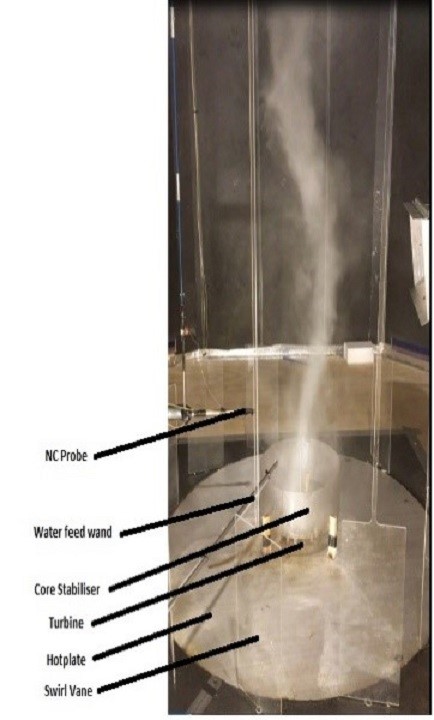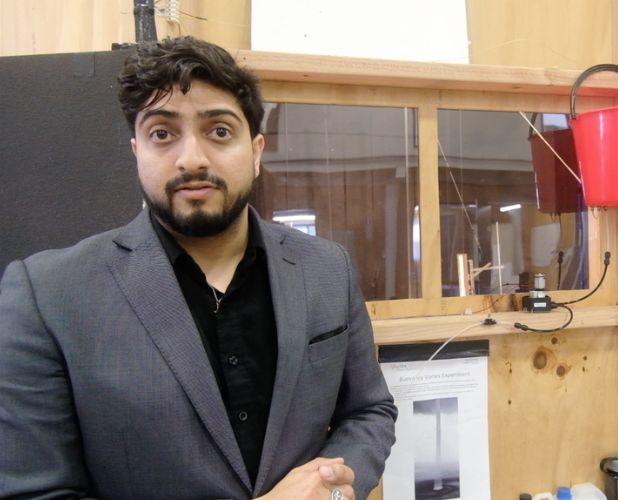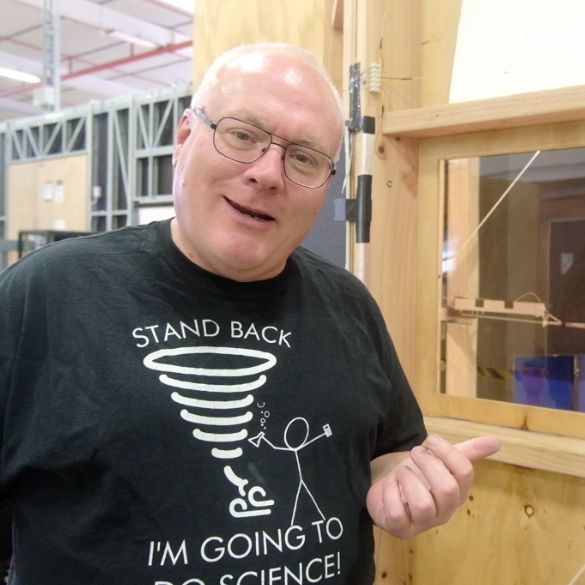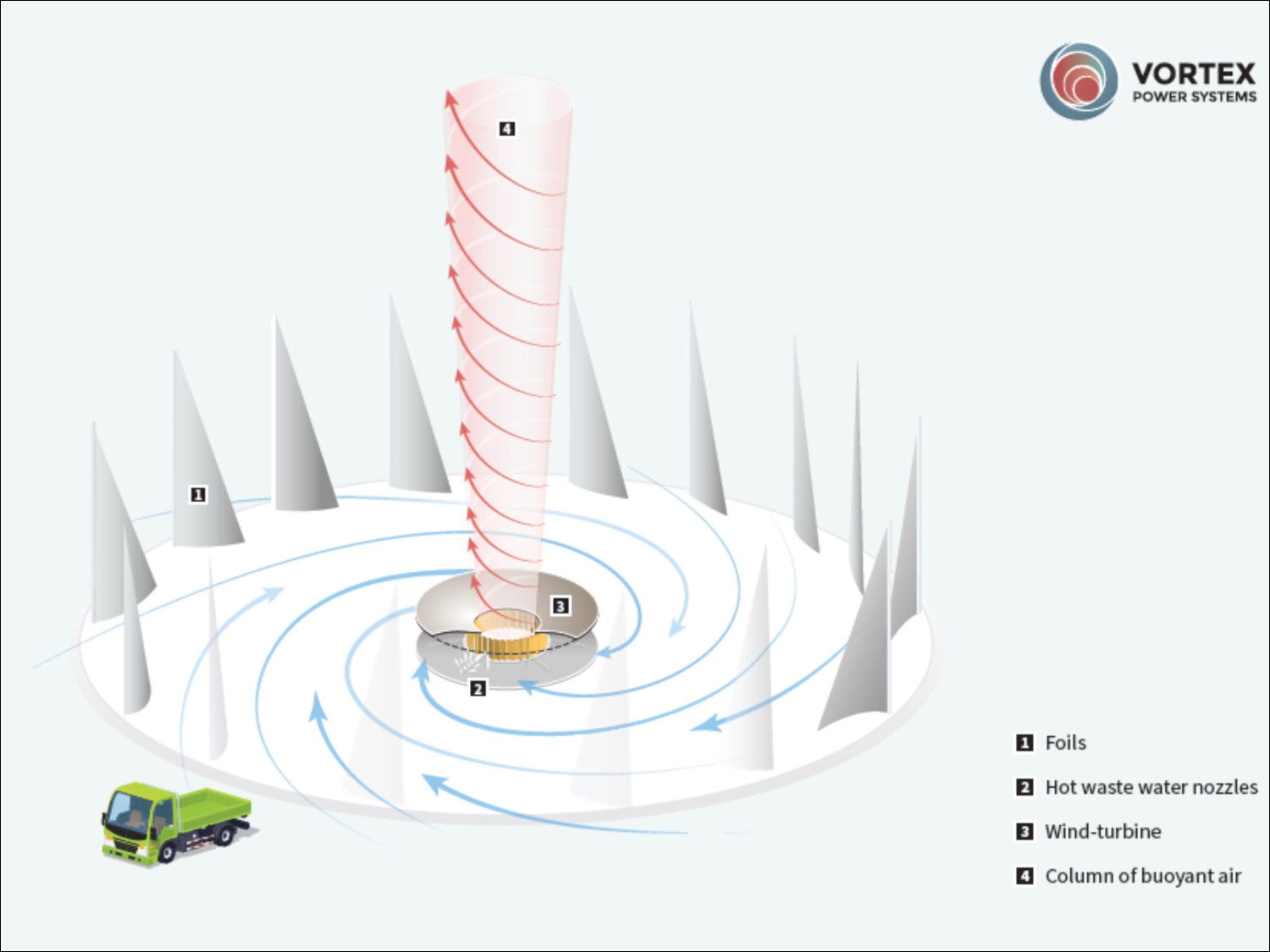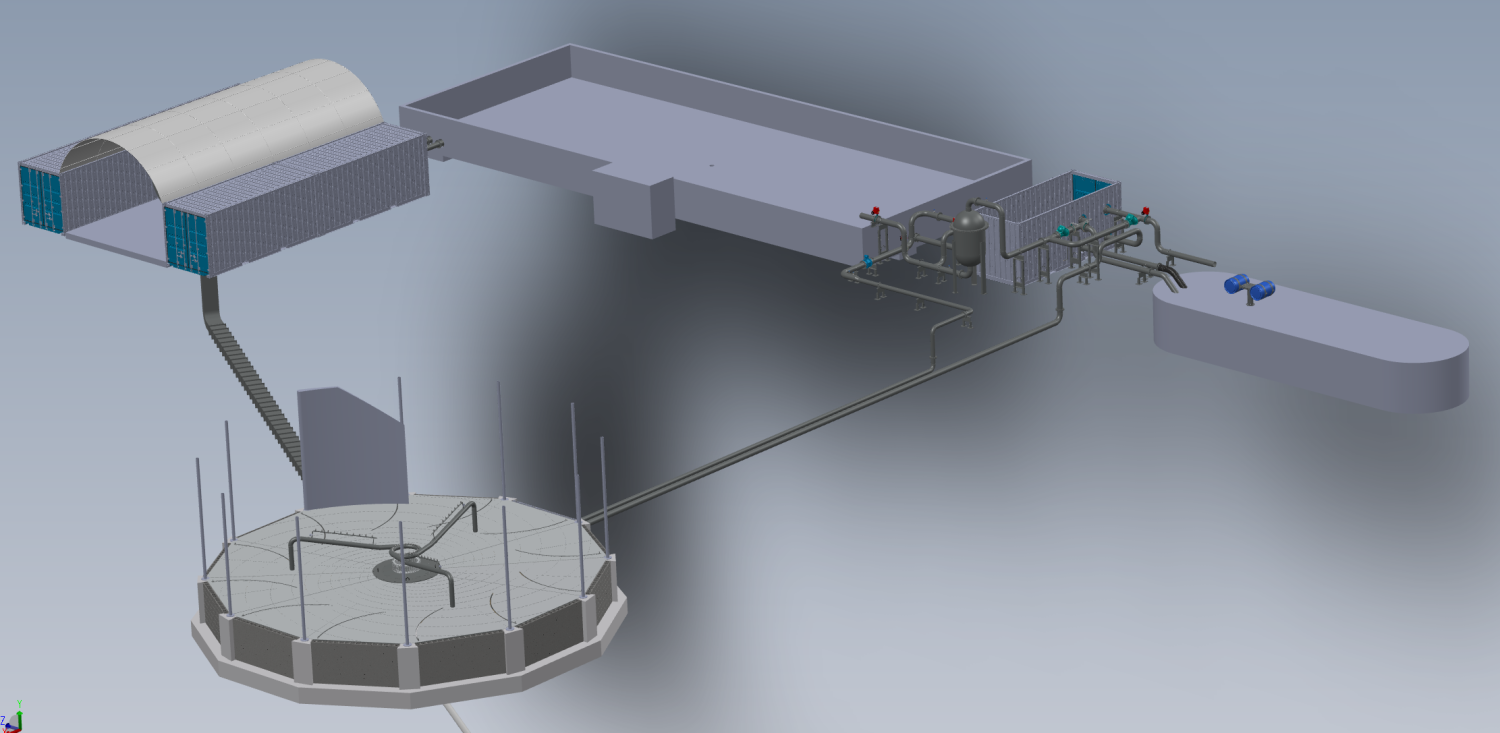The inspiration for Vortex Power Systems came when Hawkes, an engineer, saw a whirlwind form on an airfield. Whirlwinds and waterspouts are driven by warm, saturated air converting low-temperature heat into kinetic energy in the form of a vortex.
Hawkes, who became a PhD candidate and CTO of Vortex Power Systems to pursue his idea, found a way to artificially create waterspouts by using low-temperature hot water from industry to heat and saturate a localised region of air, causing the air to rise. Swirl vanes, which look like a ring of angled yacht sails set in the ground, make the air swirl. The swirling, rising column of air then drives a turbine, which generates electricity. It’s akin to a windmill – but without the complexity and expense of hoisting machinery high in the air.
Vortex Power Systems’ technology has the potential to provide a cost-effective, efficient and eco-friendly solution to an industry-wide problem. While still in the early stages of development, it could revolutionize the way we generate and use electricity.
The company maintains the risks are minimal.
“If you were to pour oil on a table and set it alight, you could move the flame around by blowing on it because the source of fuel is diffuse. That’s what a natural whirlwind is like,” says Hawkes. “Our vortex is more like a flame on a candle. If you blow on a candle flame, you can’t detach the flame from the candle, but if you blow hard enough, you’ll blow it out.”
